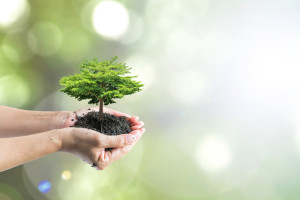Incorporating Natural Capital in Architecture with the United Nation’s Millennium Ecosystem Assessment
Natural capital is a term that’s used to describe the method of ecosystem evaluation that considers the earth’s natural resources as the basis for economic viability, meaning that the health of our forests, air, and water is directly linked to that of our market. For example, a forest includes short-term provisions, including lumber, as well as long-term benefits, such as air and water purification.
Global standards put in place by operations such as the United Nation’s System of Environmental-Economic Accounting help to keep natural capital in balance.
As an architect, one goal may be to apply natural capital to a project. This would require the team to develop a plan that incorporates the site’s natural value rather than just the economics of the job. This means, the architect and the design team must work closely to generate designs that follow this ideology.
To help this process, the United Nations’ Millennium Ecosystem Assessment (MA) analyzes the impact of humanity on the environment and helps to understand the depths and breadth of ecosystem services.
Four Categories of Ecosystem Services
To assist the architect and design teams with an innovative approach, the MA outlines four categories of ecosystem services: cultural, provisioning, regulating and supporting services.
Cultural: These types of provisions aren’t material items. Instead, they’re inspiration benefits that come in spiritual enrichment, cognitive development, reflection, and other aesthetic experiences. Witnessing other forms of architecture in nature allows architects to take this value and utilize it to make their own contribution to the environment.
Provisioning: These are products that we obtain from ecosystems, such as raw materials, water, food, and energy. When design teams adopt a natural capital framework, there’s a more intensified focus on provisioning services than the general recognition for the importance of recycled products and energy conservation.
For example, Beijing-based People’s Architecture Office created a reuse project, Courtyard House Plugin, the transforms dilapidated housing into useful contemporary habitats with minimal additional resources.
Regulating: These fundamental natural processes are often missed design opportunities and are benefits that come from ongoing monitoring of the ecosystem, including air and water purification, climate regulation, storm protection, waste treatment and pollination. Identifying the site’s potential can lead to design strategies with measurable outcomes. Theses strategies could lead to the support of regulating service, which can maintain goals such as climate regulation.
Supporting services: Supporting services reveal the largest disconnect between conventional design practices and ecological thinking. These services are necessary for ecosystem functions and include primary production, nutrient and water cycling, oxygen production, soil formation, and habitat provisioning. These services show an impact over an extended period of time rather than direct impacts that the other services produce.
One example is a masonry unit called Loom Studio’s Egg Block. This company supports bird nesting.
Scranton Products’ sustainable products support a healthier environment and offer both initial and long-term improvements to the indoor air quality of your projects. Click here to find out where you can buy Scranton Products.



